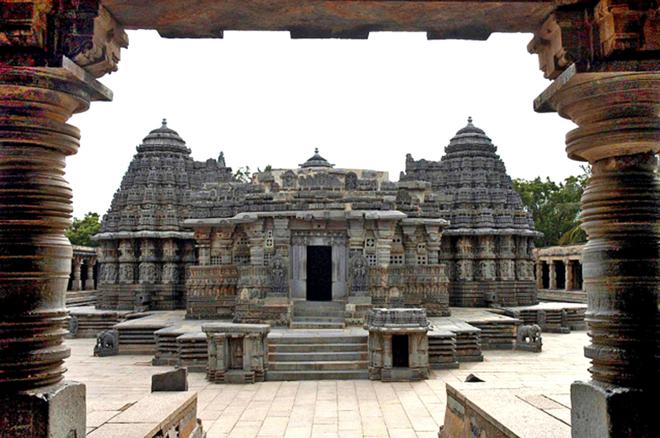The Hoysala temples at Belur, Halebidu and Somanathapur in Karnataka were declared as UNESCO World Heritage Sites on September 18 in a move that will bring global recognition with prospects of increase in international tourism to these places.
The Chennakeshava temple at Belur and Hoysaleshwara temple at Halebidu — both in Hassan district have been on the UNESCO’s tentative list since 2014. The Keshava temple at Somanathapur in Mysuru district was appended to the other two monuments under the tentative list and all the three were officially nominated by the Centre as India’s entry for 2022-23 in February in 2022.
An expert from the International Commission on Monuments and Sites (ICOMOS) concluded the site visits covering all three temples in September last year and the monuments were officially inscribed as UNESCO World Heritage Sites during the 45th session of the World Heritage Committee at Riyadh, Saudi Arabia.

All three temples are protected by the Archaeological Survey of India (ASI) and the nominations were entered as ‘The Sacred Ensembles of Hoysalas’.
The Hoysala temples are known for evolving a distinct style that is ornate with temple architecture following a stellate plan built on a raised platform. The material used in temple construction is choloritic schist which is also known as soapstone that are soft and amiable to carving.
While the construction of the Chennakeshava temple at Belur in commenced during the period of king Vishnuvardhana in 1117 CE and took 103 years to complete, the Hoysaleshwara temple was commissioned in 1121 CE while the Keshava temple at Somanathapur in Mysuru district was commissioned by Somanatha Dandanayaka during the regime of Narasimha III in 1268 CE.
A. Devaraju, Commissioner, Department of Archaeology Museums and Heritage said the inscription of the 3 sites as World Heritage Sites will give global recognition for the three monuments which are known for sculptures and carvings and further boost tourism.
The dossier for final submission was prepared by the Bengaluru chapter of INTACH for the Department of Archaeology Museums and Heritage and Department of Tourism with support from the Archaeological Survey of India.







